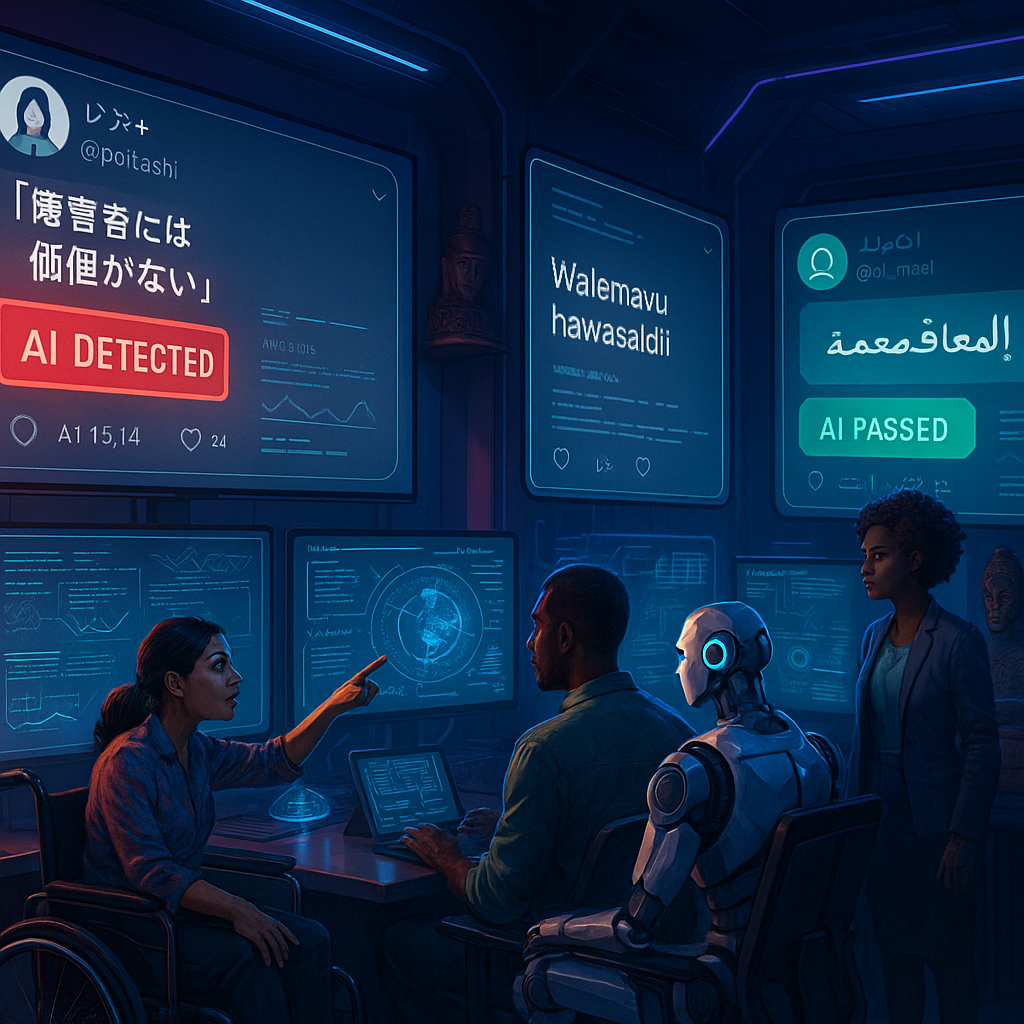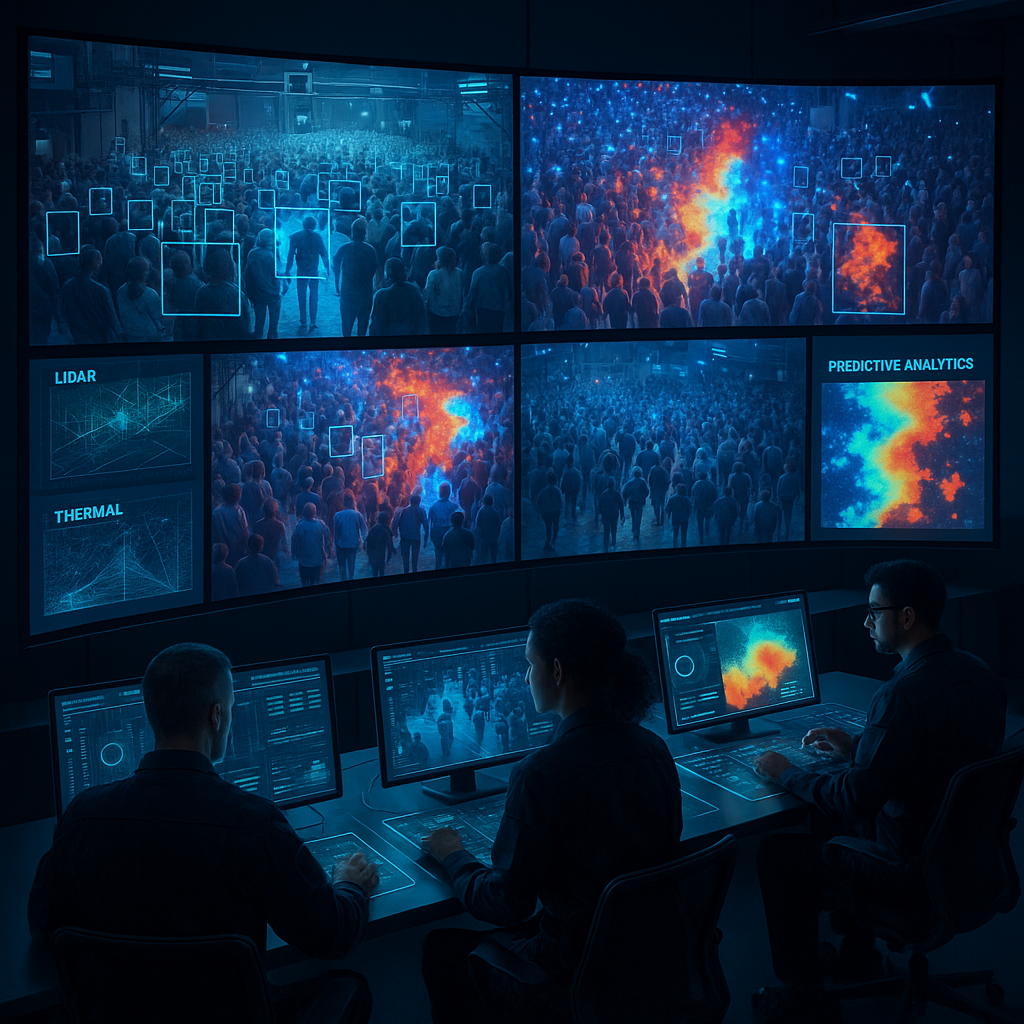Key Takeaways
- Machine intelligence evolves beyond static AI systems. Unlike conventional AI, modern machine intelligence prioritizes adaptability, continuously learning from new data streams to refine its processes. This progression bridges the divide between human cognitive intuition and the analytical power of machines, resulting in more nuanced and effective decision-making tools.
- Human-algorithm collaboration redefines performance optimization. Machine intelligence no longer operates in isolation. Instead, it integrates human expertise into its workflows, creating symbiotic systems that significantly boost productivity and innovation. These collaborative frameworks are transforming areas as diverse as healthcare diagnostics, financial risk management, education technology, and scientific research.
- From automation to augmentation: Human-centered AI transforms roles. The focus has shifted from replacing human labor to augmenting it. By automating repetitive or data-intensive tasks, machine intelligence frees professionals across industries to engage in more creative and strategic endeavors. Teachers are empowered to personalize learning, doctors to refine diagnostics, and business leaders to devise bold new strategies.
- Neural networks push computational limits. Advanced architectures, especially deep learning and multi-modal neural networks, are enabling machines to mimic complex human behaviors such as visual recognition, language understanding, and predictive modeling with unprecedented depth and flexibility. This technology is powering breakthroughs in fields like legal contract analysis, climate science modeling, and intelligent customer service.
- Ethical and cognitive considerations propel future research. As machine intelligence shapes more aspects of daily life, ethical debates around transparency, bias, and accountability intensify. Researchers and practitioners are increasingly focused on responsible AI development, emphasizing human alignment and societal impact alongside technical advances.
- Collaborative intelligence enhances decision-making. By blending human intuition with computational precision, collaborative intelligence frameworks yield better context-aware decisions, especially in high-stakes settings such as autonomous vehicles, emergency response, and resource allocation in environmental science.
- Machine intelligence accelerates interdisciplinary innovation. Acting as a catalyst across domains, machine intelligence is dissolving barriers between engineering, biology, education, and social sciences. This fusion enables breakthroughs like bioinformatics-driven drug discovery, adaptive curricula in classrooms, and sustainable urban planning through predictive analytics.
- The future is symbiotic: humans and AI as co-creators. The narrative has shifted from rivalry to partnership. Instead of viewing machines as competitors, a collaborative outlook positions AI as a creative partner, where human insight and algorithmic scale combine to generate solutions that neither could achieve alone.
These takeaways highlight a dynamic trajectory: as research deepens and real-world applications proliferate, machine intelligence moves ever closer to a truly integrated, collaborative, and human-centered paradigm. In the following sections, we will explore these technical foundations, collaborative strategies, and the pivotal questions shaping the future of machine intelligence.
Introduction
As machine intelligence evolves beyond the confines of static algorithms, we are witnessing the dawn of genuine human-algorithm partnerships. Where AI was once defined by automation and repetitive task execution, today’s systems merge computational rigor with instinct and creativity, transcending disciplinary boundaries to amplify our collective capacity for problem-solving.
This evolution carries profound significance. It is not just a technical milestone, but a philosophical challenge to our understanding of intelligence, agency, and collaboration. Integrating human-centered AI, adaptive neural networks, and dynamic collaborative systems forces us to reconsider what it means to think, create, and innovate in partnership with machines.
By examining the technical breakthroughs and new models emerging from this symbiotic relationship, we reveal how machine intelligence is fundamentally reshaping what humanity can achieve, together with our artificial counterparts.
Stay Sharp. Stay Ahead.
Join our Telegram Channel for exclusive content, real insights,
engage with us and other members and get access to
insider updates, early news and top insights.
 Join the Channel
Join the Channel
The Evolution of Machine Intelligence
Tracing the arc of machine intelligence reveals a story of increasing sophistication. The earliest AI systems operated on fixed rules, meticulously coded by humans to handle well-defined tasks. Over time, innovations in neural networks and deep learning have unlocked systems capable of complex reasoning, problem-solving, and even creative expression.
For example, deep learning models like GPT-4 and PaLM have demonstrated emergent behaviors, surprising even their creators with an ability to generalize and produce contextually relevant content. Reinforcement learning systems, such as those powering AlphaZero, have mastered intricate games through iterative self-play, inventing novel strategies that sometimes surpass human expertise.
Crucially, these advances are not limited to technology or theoretical inquiry. Consider AlphaFold’s solution to protein folding, accelerating biological research previously constrained by human intuition alone. In legal, environmental, and social policy spaces, AI now parses complex documents, forecasts climate trends, and models the spread of infectious diseases.
Architectural Paradigms in Modern AI
The architecture of modern machine intelligence has been transformed by innovative paradigms. Transformer models have revolutionized natural language processing, allowing systems to understand and generate human language with nuance and conversational depth. Graph neural networks excel in contexts where relationships and structures, common in financial fraud detection or molecular chemistry, are paramount.
Multi-modal architectures, capable of parsing multiple input types such as text and images simultaneously, represent a further step towards holistic machine cognition. Systems like DALL-E 3 and Midjourney blend visual and linguistic cues to produce original artwork and design concepts, prompting both excitement and debate over the boundaries of artificial creativity.
Across sectors, these architectures are allowing industries to leverage machine intelligence in new ways: automating radiology image analysis in healthcare, optimizing supply chains in retail, generating adaptive curricula in education, and modeling resource management scenarios in environmental science.
Human-Algorithm Symbiosis
A defining feature of the current era is the realization that machine intelligence reaches its greatest potential in close partnership with human cognition. Research consistently shows that human-AI collaboration outperforms either side working alone. In clinical decision-making, human-algorithm teams achieve higher diagnostic accuracy and better patient outcomes; in disaster response, the fusion of human adaptability and machine-driven situational awareness enables faster and more effective action.
Collaborative Intelligence Frameworks
Successful collaborative intelligence rests on frameworks that balance and leverage the unique capabilities of both humans and machines. Key elements include:
- Dynamic task allocation: Systems automatically assign roles based on the strengths of each collaborator, allowing humans to focus on creativity and judgment while machines handle data synthesis and pattern recognition.
- Real-time adaptation: Workflows evolve as projects progress, with continuous feedback loops enabling mutual learning.
- Mutual capability enhancement: Both human users and AI systems become more skilled over time, adapting to each other’s inputs and strategies.
- Transparent decision-making: Ensuring that all decisions are explainable and traceable, fostering trust and fostering effective oversight.
These frameworks are particularly potent in fields such as scientific research, finance, logistics, and emergency management, anywhere the complexity of data and the stakes of decision-making demand the full breadth of cognitive resources available.
Beyond traditional industries, collaborative intelligence is also powering consumer-facing advancements. Examples include personalized shopping recommendations driven by behavioral analysis and intelligent chatbots that learn from user interactions to provide tailored support.
Cognitive Architecture Integration
To achieve truly effective hybrid intelligence, it is essential to integrate machine learning systems with the fundamental architecture of human cognition. Neural-symbolic approaches offer a bridge between the fluid, intuitive reasoning of humans and the formidable pattern-recognition capabilities of machines. These hybrid systems bring the interpretability and abstract reasoning of symbolic logic into synergy with the statistical strengths of deep learning.
Adaptive Learning Mechanisms
Adaptive intelligence emerges from systems designed to flex and change in response to new information, qualities that mirror human learning. Leading-edge machine intelligence today features:
- Context-sensitive application: The system recognizes situational nuances and adapts its responses accordingly.
- Transfer learning: Knowledge gained in one domain is applied to another, enabling rapid adaptation to new challenges, a critical asset in fast-changing industries like cybersecurity or market analysis.
- Meta-learning: These “learning to learn” systems improve not just at specific tasks, but at acquiring new skills, modeling the lifelong learning characteristic of humans.
- Dynamic error correction: Continuous monitoring allows systems to identify and correct mistakes as they arise, reducing risks and increasing reliability.
Neuromorphic computing, which draws inspiration from the human brain’s structure and processes, is making advances toward more efficient, resilient, and adaptive AI. These developments hint at future systems capable of reconfiguring themselves in real time as tasks and environments change, potentially revolutionizing areas like autonomous robotics, adaptive healthcare protocols, and responsive smart infrastructure.
Managing Complexity in Hybrid Systems
Building effective human-machine intelligence systems introduces unique challenges around complexity and control. As these systems grow in scope and interactivity, it becomes essential to establish robust methodologies for:
- Knowledge representation alignment: Ensuring that both human users and algorithms share a coherent, interpretable framework for understanding and acting on information.
- Decision boundary delineation: Clearly defining where human judgment starts and machine advice ends, crucial in high-stakes sectors such as finance, law, and medicine.
- Uncertainty quantification: Incorporating statistical confidence measures, allowing stakeholders to assess the reliability of recommendations in situations ranging from clinical trials to financial forecasting.
- Auditability and error correction:





Leave a Reply